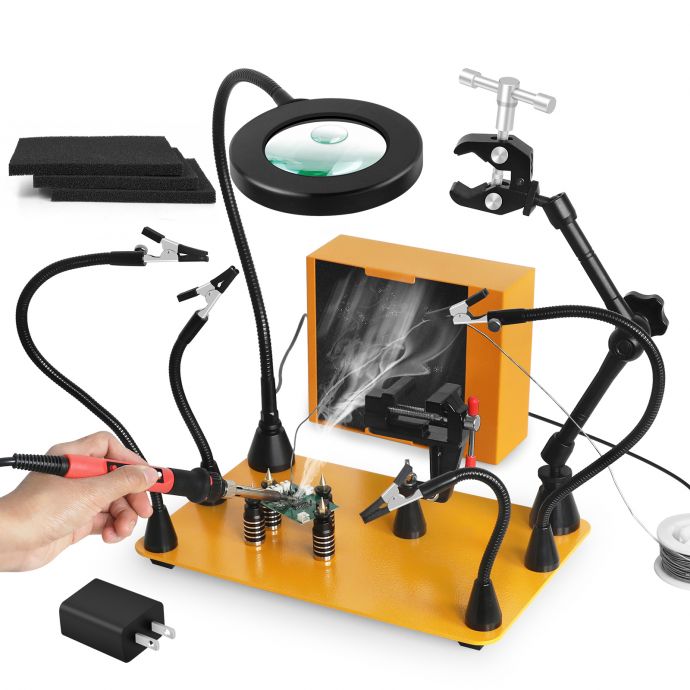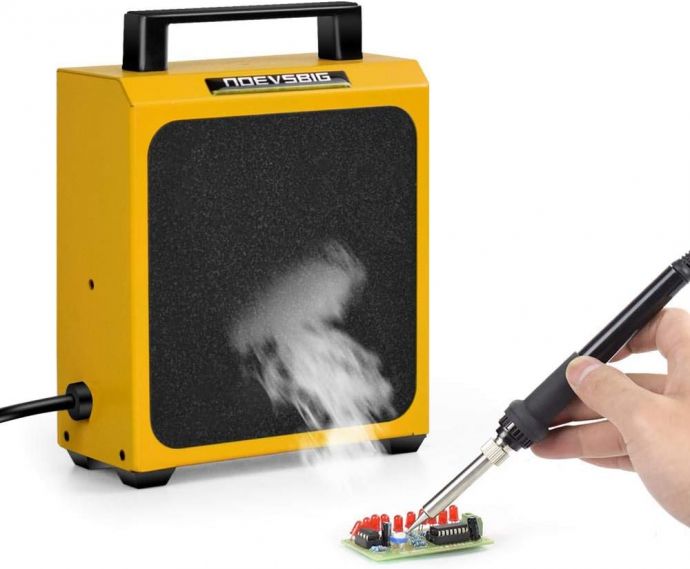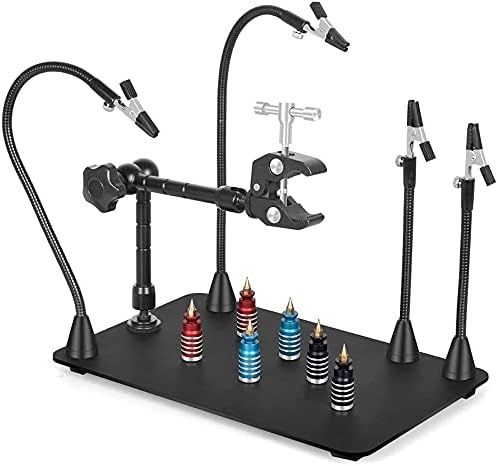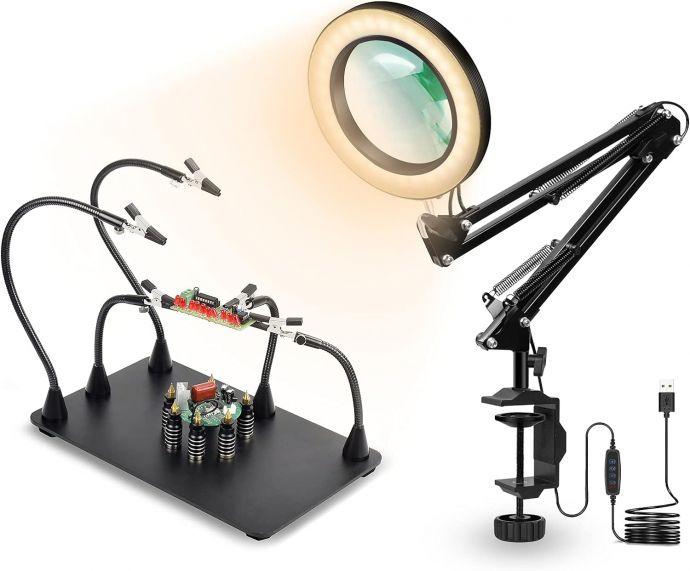In the realm of electronics and soldering, maintaining a safe and clean workspace is paramount. The fumes generated during soldering can pose significant health risks if not managed effectively. As a DIY enthusiast, crafting your own solder fume extractor not only enhances your workspace safety but also allows for customization that suits your specific needs. This guide walks you through building your ultimate 6.7-inch solder fume extractor, a tool designed to absorb smoke, prevent hazards, and significantly improve your workshop's air quality.
### Understanding Fume Extractors

Before embarking on your DIY project, it’s essential to understand the purpose and function of a fume extractor. These devices are engineered to capture and filter out harmful smoke and particulates produced during soldering. The main components of a fume extractor include a fan, filters, and a housing unit. Together, these elements work to ensure the air you breathe remains clean and toxin-free.
### Components Needed
To start this project, gather the following materials:

- **Fan**: A 120mm (4.7 inches) computer fan is ideal for this project. It provides enough airflow to effectively draw in fumes.
- **Activated Carbon Filters**: These are essential for trapping harmful substances. You’ll need a few layers of these.
- **Power Supply**: Typically, a 12V DC power supply suits most computer fans.
- **Housing Material**: Consider using lightweight aluminum or acrylic sheets to construct the housing.
- **Switch**: A simple on/off switch for controlling the fan’s operation.

- **Screws and Nuts**: Necessary for assembly.
- **Adhesive**: Heat-resistant glue or epoxy to ensure secure construction.
- **Rubber Feet (optional)**: Reduces vibrations and keeps the extractor stable.
### Step-by-Step Construction

#### Step 1: Design and Planning
Begin by sketching your design. Consider how the fan, filters, and housing will fit together. The housing should comfortably accommodate the fan and several layers of filters. Plan for an air intake on one side and an exhaust on the opposite side, ensuring that airflow is efficient.
#### Step 2: Constructing the Housing

Cut your chosen material (aluminum or acrylic) to form the housing. You’ll need a front panel, a back panel, two side panels, a top, and a bottom. Ensure that the front panel has a cutout for the fan. The back panel should have an opening for exhaust.
Assemble the panels using screws and adhesive. If using acrylic, ensure that all edges are smooth to avoid any sharp corners.
#### Step 3: Fan Installation

Secure the fan to the front panel’s cutout using screws and nuts. Make sure the fan’s airflow direction is towards the exhaust opening, so it effectively draws fumes away from your work area.
#### Step 4: Adding Filters
Install layers of activated carbon filters directly in front of the fan. These layers can be secured with a removable frame or clips to allow for easy replacement. Aim for at least three layers of filters to maximize smoke absorption.

#### Step 5: Electrical Connections
Connect the fan to the power supply and install the switch. This usually involves connecting the positive and negative wires from the fan to the corresponding terminals on the switch and power supply. Ensure all connections are secure and insulated to prevent any short-circuits.
#### Step 6: Final Assembly
Once all components are in place, seal any gaps with adhesive to prevent air leakage. Attach rubber feet to the bottom of the unit to protect your work surface and minimize vibrations.
### Optimizing Air Quality
The effectiveness of your fume extractor is contingent on regular maintenance. Here are some tips to keep it functioning optimally:
- **Filter Replacement**: Regularly check and replace the carbon filters. Depending on usage, this may be every few months.
- **Cleaning**: Periodically clean the fan and housing to remove dust buildup, which could hinder performance.
- **Testing Airflow**: Use airflow meters to ensure the fan is moving air efficiently. If there’s a drop in performance, check for blockages or wear in the fan or power supply.
### Safety Considerations
While building a fume extractor, prioritize safety. Always work in a well-ventilated area and wear protective gear if necessary. When dealing with electrical components, ensure that all connections are insulated to prevent shocks.
### Enhancements and Customizations
After mastering the basics, consider upgrades to enhance your fume extractor’s performance:
- **Variable Speed Control**: Implement a PWM control for adjustable fan speeds, catering to different fume volumes.
- **Additional Filters**: Add HEPA filters for fine particulate filtration alongside carbon filters.
- **LED Indicators**: Install LEDs to signal when the device is on or when filter replacements are due.
### Conclusion
Building a DIY solder fume extractor serves as a rewarding project that blends functionality with personal safety. By carefully selecting components and following a precise construction process, you can create a tool tailored to your workspace needs, promoting a healthier and more efficient soldering environment. Through regular maintenance and potential customizations, your homemade fume extractor can remain a vital asset in your workshop for years to come.









